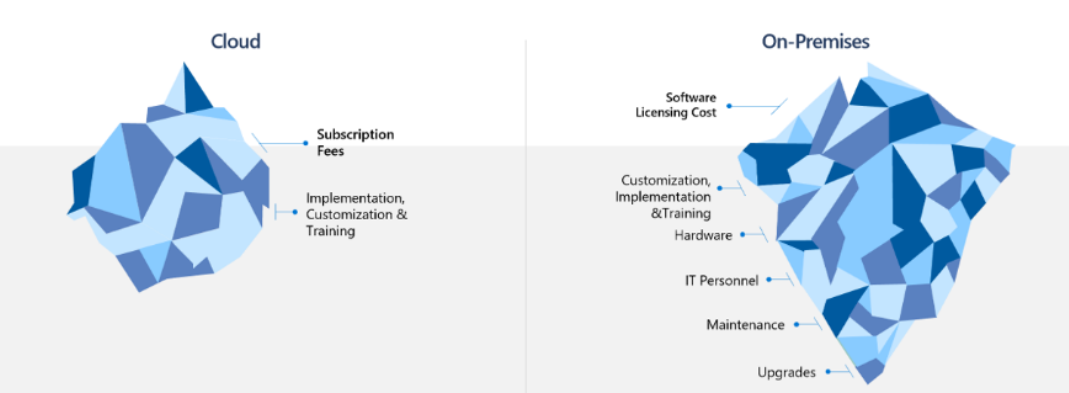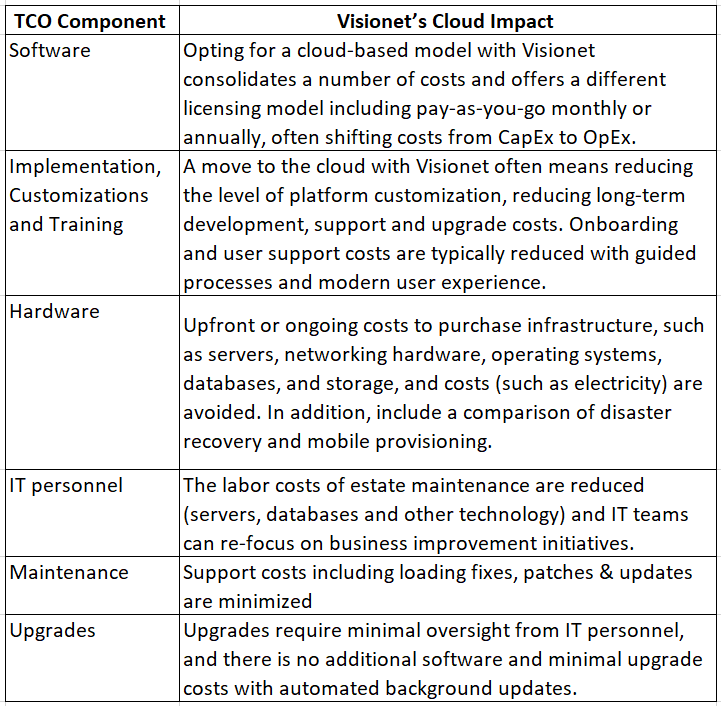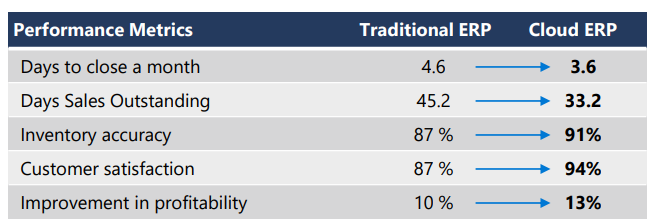
Listen to this blog
Microsoft Dynamics AX has been in the market for more than two decades and has undergone several upgrades and improvements over the years. As we are aware, the mainstream support for Dynamics AX ended in 2021, Microsoft geared its investment towards Dynamics 365, an enhanced ERP solution that drastically improves customer experience and business operations.
In our previous blog, we spoke about the reasons why you need to upgrade to the Dynamics 365 solution. In this blog we will give you insights that will help you determine if this is the right move for your organisation or not.
Before that, you will first need to understand the economic impact of your current Dynamics AX solution and how this compares to Dynamics 365 in the cloud.
Based on Microsoft and Visionet’s experience of working with multiple organizations, we typically see the economic impact affects three important areas:
1. The Total Cost of Ownership (TCO)
Migrating to the cloud can provide cost savings in terms of hardware and maintenance costs, as well as reduced licensing costs through a subscription-based model. The starting point is a financial estimate of the economic value of investment against the total direct and indirect cost savings over your system lifecycle. Dynamics 365 follows a cloud-based subscription model, which is more cost-effective for small to medium-sized businesses. Whereas Dynamics AX 2012 requires a more traditional on-premises setup, which ends up being more expensive in terms of hardware, maintenance, and IT support costs.
The TCO estimate considers six cost areas to visualize transition to the cloud. 

2. Business Performance Improvement:
A move to the cloud with Visionet offers significant potential to improve business performance with improved productivity, capability and business insights. With Visionet’s expertise organizations will be able to observe increased automation, a better user experience, reduced rework, and enhanced forecasting increase in companywide productivity. In addition, real-time data analysis and streamlined processes can help enhance forecasting accuracy, improve quality, reduce waste, and prevent delays.

Dynamics 365 Cloud solutions typically perform better than on-premises with operating costs, schedule compliance and on-time delivery. Overall, this can lead to improvements in the cycle-time of key business processes, together with improved operational efficiency materializing in increased profit margins. The business outcomes (KPI impact) from the use of Cloud ERP solutions varies across industries.
3. Accelerated Time-to-Value
The journey to the cloud brings with it huge opportunities to become more agile and respond ever faster to the changing demand. Organizations are frequently able to continuously improve, with faster deployment, more frequent updates, and a faster capability enhancement process.
In addition, businesses can adapt more quickly, scaling to new sites or geographies, improving the time to on-board newly acquired businesses. This accelerates the time to standardize and improve performance together with gaining consistent global performance insights. Finally, organizations can become more data-driven with new insights based on more robust data gathering and real-time availability to drive innovation. These insights support improved strategic planning and new operating models.
Visionet’s Expertise with the Microsoft Dynamics AX Migration
Regardless of the Microsoft Dynamics AX migration option selected, it's important for organizations to choose a trusted Microsoft Dynamics AX partner to ensure a successful migration and continued support and optimization of their Dynamics AX implementation. At Visionet, we understand that moving from AX Dynamics 2012 to Dynamics 365 can be daunting. However, with our experienced team of experts, we can help simplify the process for your business. Our industry knowledge guarantees a seamless transition, preserving your processes and ensuring a hassle-free upgrade to Dynamics 365. Microsoft recognized Visionet as the Partner of the Year 2022 in the Dynamics 365 Commerce category because of the key migration cases we have handled for our clients across the globe. We are well equipped to carry this out for your organization as well.




